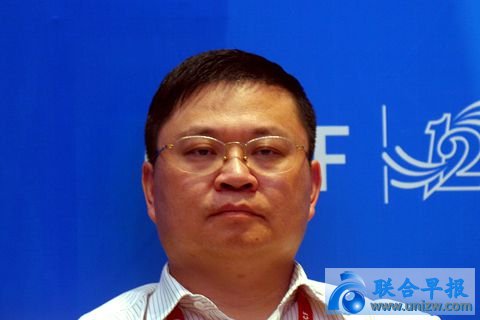
The fines and confiscations have been paid in full, but they refuse to accept the punishment of the Securities Regulatory Commission
He Simo, the 53-year-old chairman of EAST, has multiple labels such as the richest man in Dongguan, a billionaire, and a philanthropist. He likes to be interviewed by the media, recounts his arduous entrepreneurial journey, and promotes naked donation on many occasions.Penny.
Recently, such a rich man, He Simo, was confiscated by the China Securities Regulatory Commission for a total of 128 million yuan for manipulating the stock price of a listed company he controlled.According to the Caixin reporter, He Simo has handed over all the fines and confiscations, but he refuses to accept the penalty from the Securities Regulatory Commission.The operation is difficult, and the words are sincere, and he is close to writing a blood letter to the China Securities Regulatory Commission. A person who knows He Simo told Caixin reporter that this is his tricks.
Through the employee stock ownership plan
In this information-based market manipulation case, the employee stock ownership plan has become a tool for the parties to manipulate the market, which has never been done before.In order to prevent shareholders of listed companies and directors, supervisors, and senior investors from reducing their holdings of small and medium-sized investors, the China Securities Regulatory Commission has revised the regulations on shareholding reductions. However, these strict new regulations on shareholding reductions are not applicable to employee stock ownership plans of listed companies. In this caseAmong them, EAST's employee stock ownership plan has become a sharp weapon for its chairman, He Simo, to manipulate the market.
From the specific facts of the case, on February 4, 2015, EAST established an employee stock ownership plan, holding a total of 4.36 million EAST shares at a cost of about 27 yuan.On June 28, 2016, the lock-up period of the employee stock ownership plan expired, and the stocks can be sold. On February 3, 2017, the employee stock ownership plan expired, which means that before February 3, 2017, the employee stock ownership planAll shares must be sold to be liquidated.
After the employee stock ownership plan was lifted, from June 28, 2016 to November 28, 2016, the highest closing price of EAST was 30.58 yuan on July 20, and then fell all the way, closing at 26 yuan to 27 yuanIn the meantime, the employee stock ownership plan has not sold any shares for a long time.
On the evening of November 28, EAST announced the high-speed transfer plan, distributing a cash dividend of RMB 0.90 (tax included) for every 10 shares to all shareholders; at the same time, using the capital reserve to transfer 30 shares to all shareholders for every 10 shares.Stimulated by the good news, EAST rose by the limit for five consecutive trading days, and its stock price rushed to 42.35 yuan. The employee stock ownership plan sold all the stocks at a high level, making a total profit of 63.9971 million yuan.
Although the profit is nominally owned by the employee stock ownership plan, in fact, judging from the capital contribution at the time, the self-raised funds of the employees were only 11.693 million yuan, and Yangzhou Dongfang Group, the largest shareholder of Easier (actual controller He Simo), pledged the equityProvided 70.1581 million yuan to the employee stock ownership plan.
In other words, from the perspective of income distribution, Yangzhou Dongfang Group controlled by He Simo obtained most of the income.People close to the investigators of the CSRC also told Caixin that the employees only received more than 10 million yuan from the employee stock ownership plan.
The employee stock ownership plan was launched by the China Securities Regulatory Commission in June 2014. The original intention was to hope that directors, supervisors, senior managers and other employees of listed companies would hold shares in listed companies through the employee stock ownership plan.The internal employees of the company fulfill their duties and share the dividend income or stock appreciation income brought about by the company's performance growth.
However, He Simo used information such as high transfers to drive up the stock price, and then cashed out the employee stock ownership plan at a high level. This made the employee stock ownership plan a sharp weapon for the insiders of listed companies to use the information advantage to harvest the majority of small and medium investors, which completely violated the employee stock ownership plan.The intent and value of the plan.
Vital evidence
In this case, He Simo was characterized as information-based market manipulation, which violated the provisions of Article 77, Paragraph 1 (4) of the Securities Law, that is, manipulating the securities market by other means, which is a catch-all clause for market manipulation.
Investors are familiar with typical market manipulation behaviors such as continuous buying and selling, counter-inverting, and counter-knocking, but for this kind of pure information-based market manipulation, it is necessary to catch the actual controller and use his own information advantage to control the timing of information release.It is relatively difficult to obtain evidence for the subjective intention to increase the stock price, and such cases are rare.
In this case, the investigators captured the key evidence in the computer of the representative of EAST Securities, that is, around November 22, 2016, he had counted the dividend plans of 9 listed companies and the stock price trend after the disclosure as required., in the statistical table, the three companies belonging to the same industry as Yishite are marked with red letters: one company’s 10 to 8 in the first half of 2016 was 1, and the stock price did not respond after the disclosure; the other two companies’ 10 to 30 in the first half of 2016After the disclosure, the stock price rose by the limit for 4 consecutive days and 3 days respectively.He Simo also admitted in the transcript that carrying out high transfers was an effective way to boost stock prices according to the market conditions at the time.
In his defense, He Simo also pointed out that the original intention of the high transfer plan is to improve the market competitiveness of EAST, and the main purpose is to increase the registered capital of EAST to participate in the bidding project.Therefore, it is a normal commercial arrangement to propose the profit distribution and capital increase plan.However, relevant investigators told the Caixin reporter that before the plan was proposed, He Simo only paid attention to and calculated the stock price trends of other companies in the industry, and did not have any materials or evidence to prove that the company was trying to increase its registered capital and improve its competitiveness.
At the same time, the above-mentioned employee stock ownership plan will be liquidated by February 2017, and the stocks must be sold. However, the stock price was sluggish at that time, and more than 70 million yuan of the employee plan funds came from equity pledges, and the pressure on financing and borrowing was huge.
He Simo directly put forward the plan of high transfer transfer on November 28, 2016 without waiting for the audit of the annual report to be completed.Profit distribution needs to be based on operating performance. Usually, the board of directors should discuss the profit distribution plan after the accountants have audited and confirmed the profits. In the past, He Simo also proposed the profit distribution situation twice, and they all waited until the financial report audit was completed.of.
It is very unreasonable for He Simo to disclose the high transfer plan in such a hurry this time.
He Simo did not have a reasonable explanation for why he proposed and announced the profit distribution and high transfer plan at this point in time.
On the whole, the employee stock ownership plan is about to be liquidated, but the stock price is sluggish. He Simo directly put forward a plan for high transfer before the annual report audit is over.Undisclosed, the vast majority of the profits belonged to He Simo.
After multi-dimensional demonstration and investigation by the China Securities Regulatory Commission, the China Securities Regulatory Commission believes that He Simo has the motive and intention to manipulate the market, and characterizes it as information-based market manipulation.
lsquo;High delivery transfer rsquo; Although it has no real impact on shareholders' rights and interests, it has long been the subject of market speculation.People close to the regulators pointed out that the major shareholders and actual controllers of some listed companies use this kind of market hype to manipulate the company’s stocks to make profits, trying to alienate the listed companies into cash machines for a few people, and this kind of manipulation is highly concealed., Seriously deviated from the three principles of the market.■



